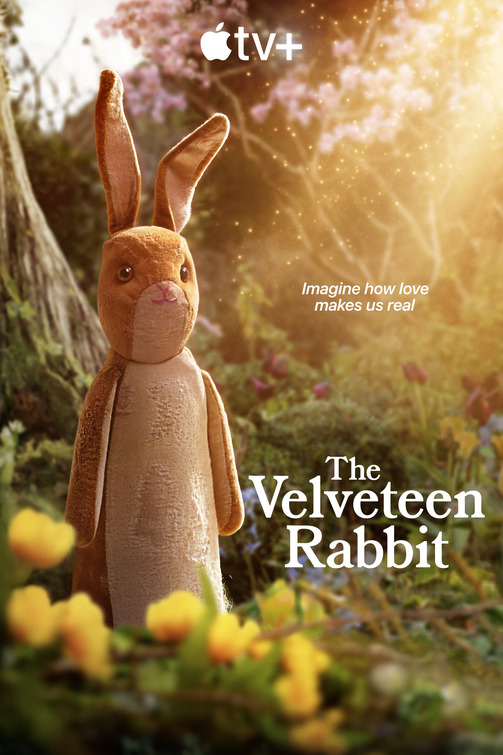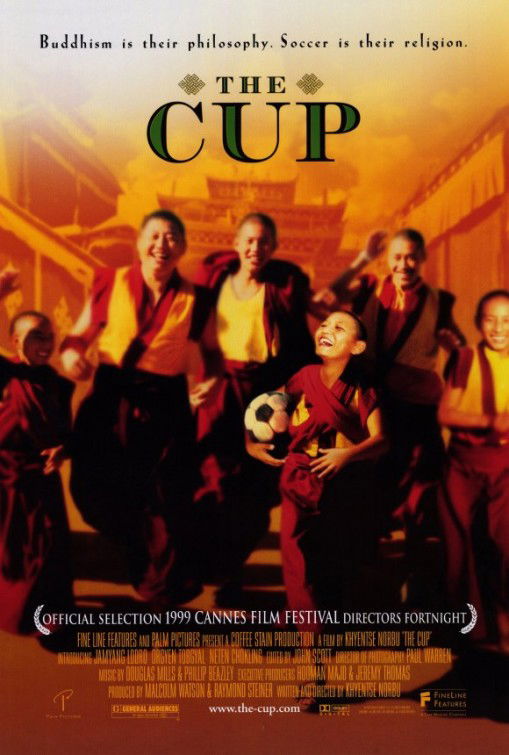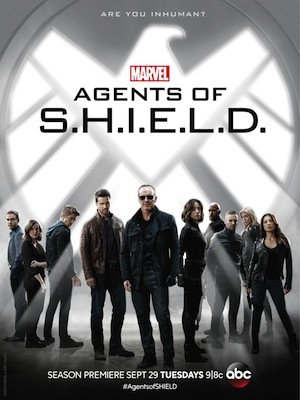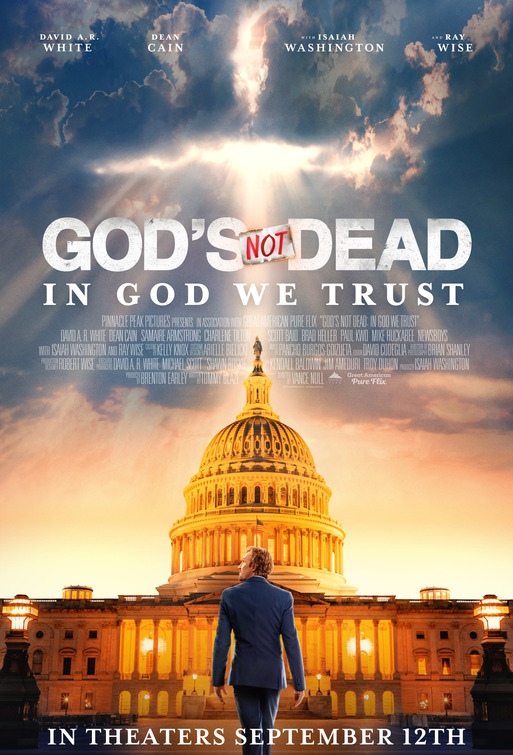"Kicking Buddha’s Gong"

| None | Light | Moderate | Heavy | |
|---|---|---|---|---|
| Language | ||||
| Violence | ||||
| Sex | ||||
| Nudity |
What You Need To Know:
THE CUP aptly exposes the ascetic lifestyle in such a monastery, the monks’ concerns about what the Communist Chinese are doing to their homeland, Tibet, and the problems the monastery’s leaders have in controlling the young monks’ interest in the modern world. However, there are Buddhist chants, scenes of monks worshipping Buddha, a fortune-telling, and some Buddhist homilies from the elderly head of the monastery. These false religious elements are only slightly undercut by the basic charm of the story, including some mild, minor moral elements.
Content:
(FRFRFR, PaPaPa, OO, B, L, N, M) Buddhist pagan worldview with some fortune-telling occult elements & mild moral elements couched in that worldview; 2 mild obscenities & 1 strong obscenity; no violence; no sex; upper male nudity in naturalistic context; no alcohol; no smoking; and, rebellion from young neophyte Buddhist monks & boy neophyte connives to see World Cup soccer games.
More Detail:
THE CUP offers an interesting look inside an exiled Tibetan Buddhist monastery in India, but it can’t overcome the false religion from which it springs.
Based on a true story, this slightly comical movie tells what happens when the younger monks in the monastery, especially a young teenage monk, become enraptured with the 1998 World Cup in soccer. Little Orgyen (pronounced Or-guy-en) sneaks out with his friends, including a new older boy recently escaped from Tibet, to watch the soccer games in town. This displeases the older monk looking after the young ones, but Orgyen comes up with a solution which brings up an uncomfortable moral issue for him.
THE CUP aptly exposes the ascetic lifestyle in such a monastery, the monks’ concerns about what the Communist Chinese are doing to their homeland, Tibet, and the problems the monastery’s leaders have in controlling the young monks’ interest in the modern world. Even so, there are Buddhist chants, scenes of monks worshipping Buddha, a fortune-telling holy man, and some Buddhist homilies from the abbot, the elderly head of the monastery. These false religious elements are only slightly undercut by the basic charm of the story, including some mild, minor moral elements.
The false elements demonstrate Tibetan Buddhism’s irrational pantheism, which cannot sustain the atheistic, humanistic moral philosophy that Buddhists try to construct. (Of course, unlike its Tibetan cousin, traditional Buddhism is non-theistic.) The abbot in THE CUP expresses that philosophy a couple times in the movie, placing it within Buddhism’s ascetic search for “enlightenment.” The goal of such enlightenment is to fully negate not only the personal ego which God places in every human being, but also the physical world of God’s Creation in which the ego acts. The goal of Jesus Christ, however, is to redeem the fallen ego and to redeem the physical universe affected by Man’s Fall in the Garden. That redemption, says Christ, can only come through Him, not through the allegedly reincarnated man named Buddha, whose life pales in comparison to the God/Man whom Christians worship and serve. This is why MOVIEGUIDE® cannot recommend THE CUP, especially for people who do not have sufficient training in the differences between Buddhism and Christianity. Such people sometimes mistakenly think Buddhism teaches similar things to Christianity. We hope this brief analysis will help put the lie to this regrettable notion.



 - Content:
- Content: 



